The .22 Long Rifle cartridge is arguably the most popular in the world. Millions of rounds are produced each year, and every manufacturer worth their salt offers at least one firearm in .22. Rimfire rifles and handguns can be inexpensive to buy and cheap to feed. However, the popularity of the .22 LR cartridge is offset by how underestimated it is. The .22 LR is dimensionally small compared to other cartridges, and it is natural to question its effectiveness.
Effectiveness is usually understood as power. The .22 does not have the powder capacity or bullet weight of other cartridges, but it has proven to be lethal to all things that walk and crawl. But effectiveness means more than just punch. Punch does not mean much if it cannot reach the target. In other words, what is the practical accuracy and range of the .22 LR?
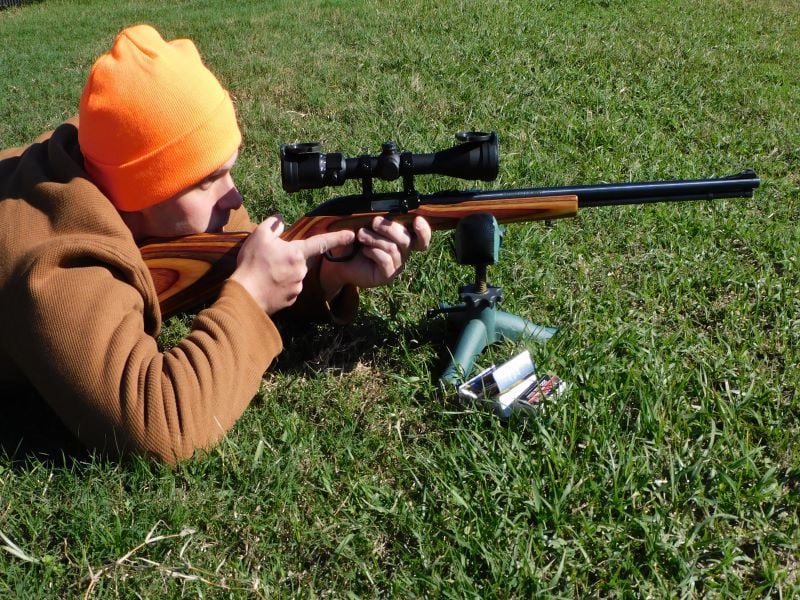
What is practical accuracy?
From a literary and literal standpoint, the .22 LR is a tale of two cartridges. If you look at a box of any .22 LR, you will likely see “Danger: Range 1.5 miles” printed on the box. However, the .22 LR’s range is limited on the square range or when hunting in the field.
Many shooters use plain iron sights on their rifles. Still, many rimfire optics on the market have a parallax set at 50 yards, denoting the intent to use the cartridge at close distances despite its potential long-range lethality. If shot carelessly into the air, a pill can go far with deadly consequences. But that is different from shooting targets, and the .22 LR is assumed to be a shorter-range cartridge.
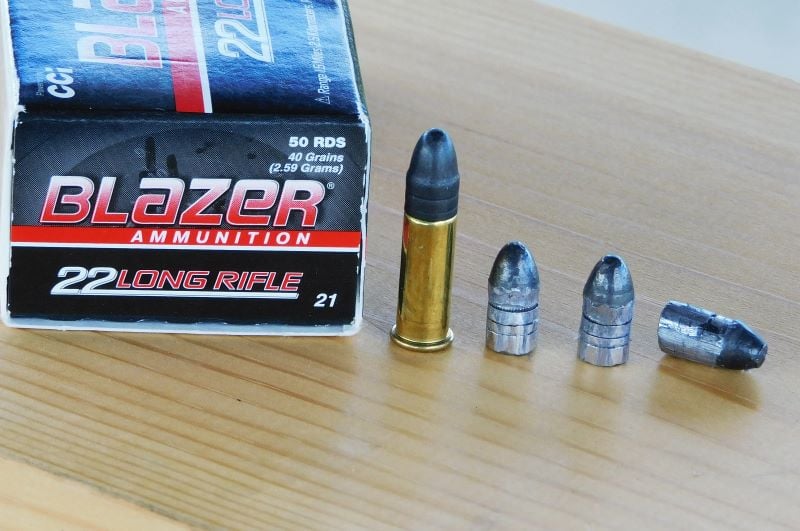
High-velocity .22 LR rounds are the most common, and these rounds use a nominal 40-grain bullet traveling at about 1280 feet per second–not much bullet or velocity, mainly when shot out of a rifle-length barrel. This has been a standard that rimfire ammo makers have been trying to beat since the introduction of the Remington Hi-Speed load in 1930. Newer rimfire cartridges came along, giving us higher velocity and a flatter trajectory that can translate into longer range. The .22 Magnum came out in 1959, and the .17 HMR and .17 Mach 2 in the 21st century. All of these rounds outperform the .22 LR at distance. That begs the question: at what distance does the .22 LR fall off? In this case, practical accuracy would mean how far you can hit targets at various distances before the ballistic drop affects that ability.
Ammunition: Not All .22 LR Rounds Are Equal
To test the effectiveness of the .22 LR cartridge, I opted for a typical .22 rifle in the form of my Marlin Model 60 with a 21-inch barrel equipped with a Sig Sauer Buckmaster 3-9×40 scope. But perhaps more important to the test is the ammunition. There are different power tiers of .22 LR ammunition on the market. These include subsonic velocity, standard velocity, high velocity, and hypervelocity. Subsonic loads nominally run at under 1,080 feet per second, while standard velocity is listed at that velocity. 1,280 feet per second is a good benchmark for what is considered high velocity and 1400+ for hypervelocity loads.
Since each will have a different velocity, they are liable to print in completely different places from one another. High velocity and hypervelocity loads are also suspected to become transonic. This is a phenomenon in which the bullet’s velocity drops below the speed of sound (approximately 1,080 feet per second), which causes the bullet to drift as it travels downrange. To this end, I decided to test one type of ammunition from the GMW catalog to gain a holistic view of the .22.
First, I shot a string of five rounds over my Caldwell Chronograph from a distance of 10 feet away to get an idea of where each round starts.
| Brand | Advertised Velocity | 5-Shot Average Velocity |
| CCI Quiet 40-grain LRN subsonic | 710 | 767 |
| CCI Standard Velocity 40 grain LRN | 1080 | 1066 |
| CCI Blazer HV 40 grain LRN | 1260 | 1292 |
| CCI Stinger 32 grain HP | 1640 | 1459 |
The CCI Quiet is about as subsonic as a load can be while still using a conventional 40-grain bullet. It represents the bottom floor of subsonic ammunition, as most loads in this category will be clocked in at just under the velocity of standard ammunition. Standard velocity loads were not as quiet and came in close to the advertised velocity.
The CCI Blazer 40-grain load is one of my favorites. It came in close to the advertised velocity. The CCI Stinger 32-grain varmint load has an optimistic advertised velocity that I could never achieve, but it is over 150 feet per second faster than high-velocity rounds. The CCI Velocitor 40-grain load would have made the comparison between these rounds more consistent, but the Stinger is the most popular round in the hypervelocity category.
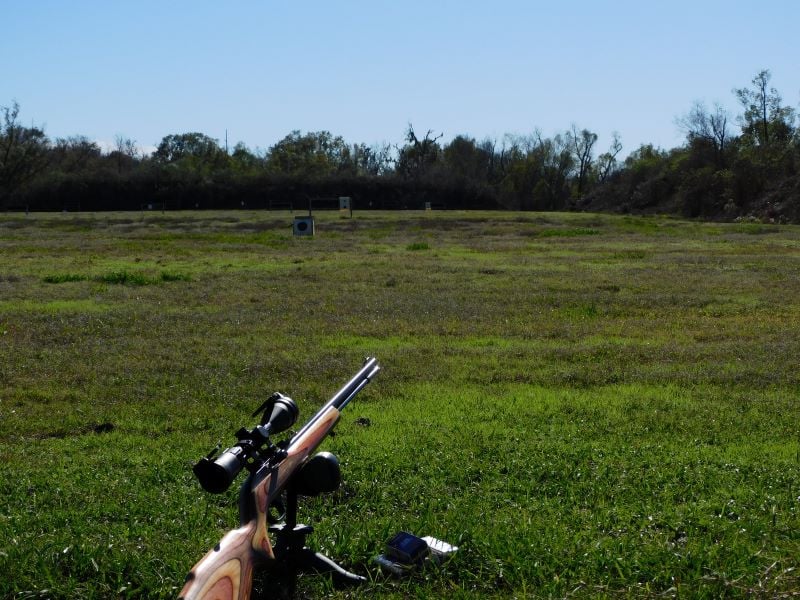
On The Range
I started my test with each ammunition by bench-resting the rifle and clustering enough ammunition to zero the optic on a paper target at 50 yards. From there, I swabbed the bore with a dry patch and fired a string of three rounds at 100, 150, and 200 yards. I then re-zeroed the rifle for the following ammunition and repeated the same process.
CCI Quiet Ammo
I began my test with the CCI Quiet ammunition. At 50 yards, I posted a respectable group to my point of aim, but at 100 yards, my bullets struck twenty-two inches low on paper. At further distances, my rounds hit the ground in front of the target, and I had to use my elevation turret on the Buckmaster scope to walk my rounds into the point of aim. I recorded the drop through a combination of measuring impacts and recording the number of adjustments made to the elevation turret of my scope to get on paper. By this method, the CCI Quiet drops five feet at 150 yards and eight feet at 200 yards. Yikes!
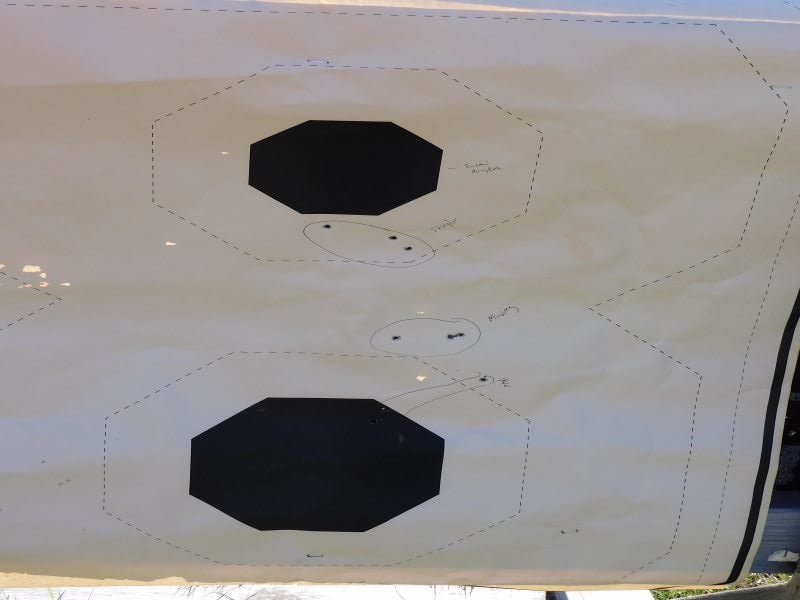
CCI Standard Velocity
The CCI Standard Velocity did better. From its 50-yard zero, these rounds dropped 11.5 inches low at 100 yards and were barely on paper at 150 yards with a drop of 45 inches. At 200 yards, the rounds had 80 inches of drop.
CCI Blazer
The CCI Blazer load drops to 7.5 inches at 100 yards with a 50-yard zero. At 150 yards, the rounds were still on paper with a compensable drop of 30 inches. But at 200 yards, my rounds hit the feet of the target. After some turret adjustments, I found the total drop to be 48 inches from the initial zero.

CCI Stinger
The CCI Stinger does perform as advertised even out of my longer 21-inch barreled Marlin, but it is still hotter than the other rounds. At 100 yards, the Stinger grouped three inches low. Beyond that distance, the Stinger’s performance decays less than the other rounds. At 150 yards, my rounds hit 14 inches low. At 200 yards, I was holding at the top of my target and reliably hitting the bottom edge, a drop of 30 inches.
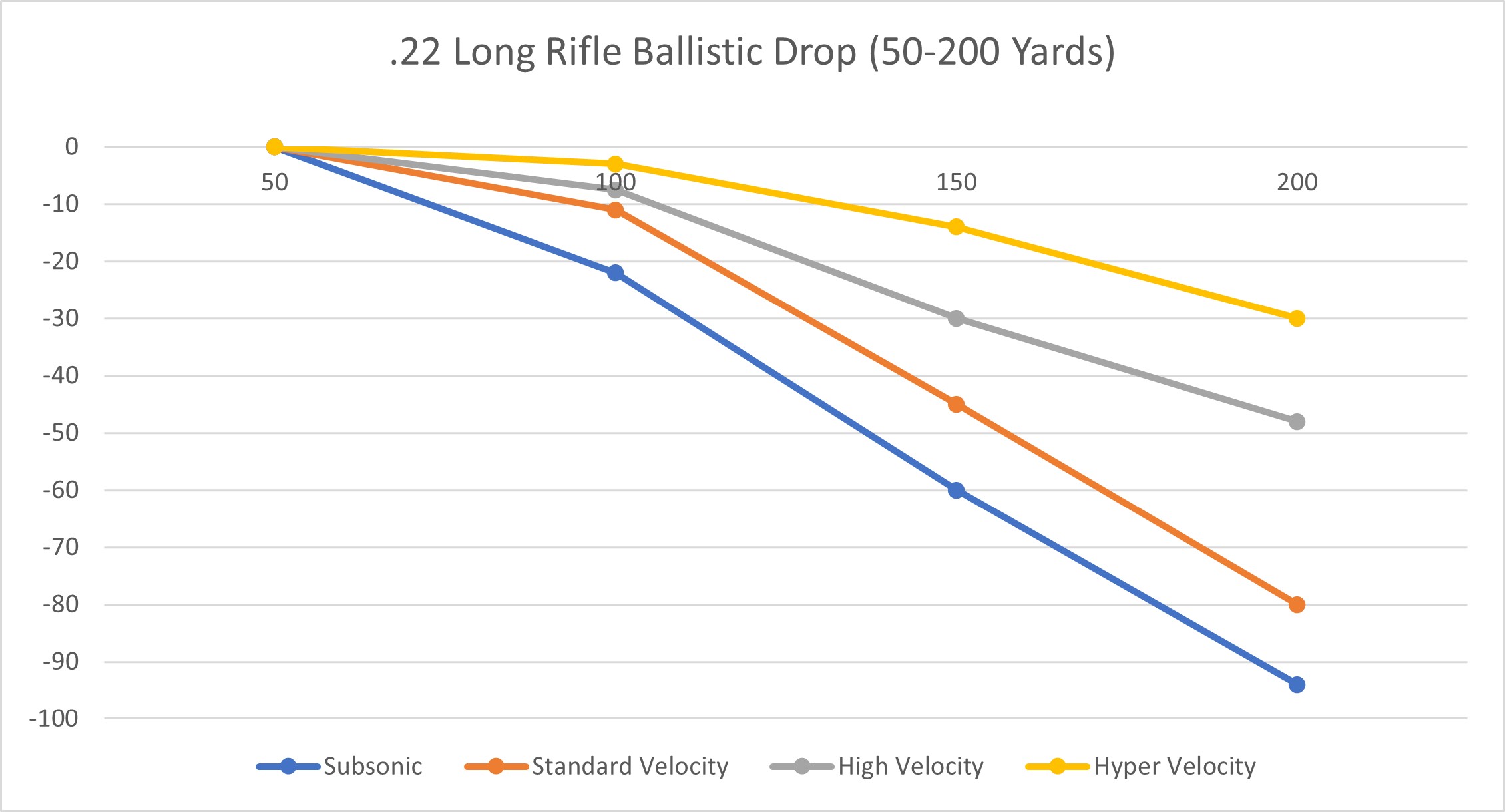
The Bottom Line
There are many opinions about the effective range and practical accuracy of the .22 Long Rifle cartridge. While a bullet from a .22 can go far and inflict a lethal wound, its practical limits are expanded or contracted depending on your notions on the round going in. Some varmint shooters I have a lot of respect for opine that the .22 is accurate out to 100 yards. I got some use out of the .22 on larger varmints out to 200 yards. In truth, the real answer is about as elliptical as the bullet’s trajectory. You could zero a .22 at 200 yards or more if your scope can adjust that high, but if you have to shoot at closer distances, those rounds will sail feet above a target.
How many feet will depend on what ammunition you choose, as not all .22 ammunition is created equal. Even with a modest zero of 50 yards, it is hard to get hits with subsonic or standard velocity ammunition at 100 yards without some major compensation. High velocity and hypervelocity ammunitions have a speed premium that gives you postponement of the drop, but by the time these bullets reach 150 yards, the debt is coming due. Although the hypervelocity Stinger load won in terms of the least amount of drop, it is still very measurable against centerfire rifle rounds and higher velocity rimfire rounds like the .17 HMR and the .22 Magnum. But between 100-150 yards is more than some will give the .22 due credit for. Like many aspects of the .22 Long Rifle, shooting accurately at these ranges is not ideal, but it is achievable.

